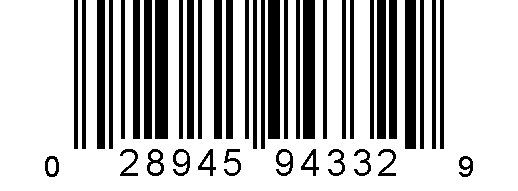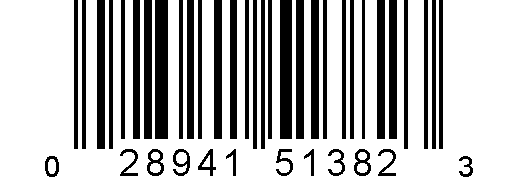Ludwig van Beethoven
Sonata for Piano and Violin No.1 in D major, op.12/1
Media Review / Comparison
2011-10-10 — Original posting (on Blogger)
2013-07-04 — New standard layout applied
2014-10-30 — Re-posting as is (WordPress)
2016-06-22 — Brushed up for better readability
Table of Contents
Why Beethoven’s Violin Sonatas?
One of the new “projects” which I tackled, so that I don’t just listen to string quartets for weeks and weeks (see “Beethoven: String Quartet op.18/1“) is the comparison of Beethoven’s sonatas for piano and violin in my music collection.
Collecting Versions
I recently finished adding digital versions of all recordings that I had on LP, and I did already listen through all these sonatas, just over two years ago — but then, I was watching Renaud Capuçon & Martha Argerich’s performance of op. 30/3 online (Medici.tv, transmitted from the Verbier Festival 2011), and was hooked immediately!! Unfortunately, there is no CD recording with these two artists playing together, but I bought Renaud Capuçon’s recording with Frank Braley, and (based on a newspaper comment) I also added the interpretation by Isabelle Faust and Alexander Melnikov (all sonatas each), plus a couple of recordings of individual sonatas that I will return to later.
I don’t plan on writing a detailed post for each and every sonata in this series (let alone extensive posts such as this one!) — but we’ll see what comes out of this. Right now I feel it’s a good idea to write about the very first sonata, while the impression is still fresh. I’ll make separate postings where there are additional artists and/or new aspects to add. I do not have the scores for these sonatas (shame for a former violin player!), so this comparison series does not feature references to bar numbers and the like. References to the CDs are given at the bottom of the respective section, or in one of the related postings — or see the summary on the postings covering Beethoven’s Sonatas for Piano & Violin.
The Versions in my Collection
Below you find my comments on the recordings that I have for the Sonata for piano and violin in D major, op.12/1 by Ludwig van Beethoven (1770 – 1827). References to the recordings are given in the bottom of each section. Here’s a short list of the recordings in this comparison, in alphabetic order:
- Renaud Capuçon & Frank Braley (2009)
- Isabelle Faust & Alexander Melnikov (2008)
- Arthur Grumiaux & Clara Haskil (1957)
- Gidon Kremer & Martha Argerich (1985)
- Yehudi Menuhin & Wilhelm Kempff (1970)
- David Oistrakh & Lev Oborin (1962)
- Itzhak Perlman & Vladimir Ashkenazy (1975)
The Movements
Note that it is for good reasons and absolutely on purpose that Beethoven named these “sonatas for piano and violin”, not for violin and piano! The movements in this sonata are
- Allegro con brio (4/4)
- Tema con variazioni: Andante con moto (2/4)
- Rondo: Allegro (6/8)
Beethoven did not specify metronome numbers for these works, apparently — unlike for some bigger works, such as his early symphonies, where he “retrofitted” such numbers, once the device became available.
Comments on the Interpretations
Yehudi Menuhin, Wilhelm Kempff (1970)
Beethoven, The Complete Violin Sonatas, Vol.1: Sonatas opp.12, 23, 24; Rondo in G, WoO 41; 12 Variations on “Se vuol ballare” from “Le nozze di Figaro”
Yehudi Menuhin, Wilhelm Kempff
DGG 459 433-2 (stereo, 2 CD); ℗ 1970

The Artists
Yehudi Menuhin and Wilhelm Kempff (1970). This clearly is a “carry-over” from my LP collection, and I remember very well that I hesitated buying this back in 1970, when it was published by Deutsche Grammophon as part of their “Entire Beethoven” project (OK, “entire” is somewhat exaggerated) on the occasion of Beethoven’s 200th birthday. My first idea back then was to purchase the entire collection (70 LPs), but then I saw that they featured artists / recordings that I didn’t really like, such as Kempff’s recordings of the piano sonatas, or the symphonies with Karajan — so I ended up being more selective.
With this recording (which then was bundled with the cello sonatas with Fournier & Kempff), I had reservations with both Kempff and Menuhin: as mentioned, I was not impressed with Kempff’s interpretation of the Beethoven piano sonatas, and Menuhin had long lost most of his artistic abilities at that time, at the age of 54. I don’t say this because I read it, or out of the blue — but I listened to him in a concert in Zurich in 1971 (Bach, violin concert in D minor), and I very well remember seeing him on TV, playing Bach’s E major partita (a movement of which he also played as an encore in that concert) — in my opinion this was bad enough not to be published at all.
Menuhin’s Bach sonatas and partitas (recorded in 1934 – 36, when he was 18 – 20) show him at the peak of his art; he is OK with the Beethoven violin concerto with Furtwängler conducting (1947), but thereafter…
The Interpretation
The main reason why I bought this collection in 1971 was because it included the variations (also true for the Cello sonatas with Fournier). I have now re-listened to this sonata, after so many years — and my reservations area still there. Kempff is OK — but really just that, nothing special, not very subtle at times, occasionally even a bit clumsy. In the fast movements, Menuhin’s tone is often shaky, almost trembling — and sometimes I have the impression that he covers weaknesses with excessive volume (call it “unnecessary robustness”) and vibrato. There are notes with bad intonation, and examples of spiccato sounding exceedingly rough. The best part of the interpretation is the slow movement (even though it definitely is not “con moto”) — if one can stand Menuhin’s excessive vibrato.
Timing, Tempo
- 9’26”; 1/4 = 144
- 7’17”; 1/4 = 51
- 5’05”; 3/8 = 100
| Recommendation: | Definitely not |
| Rating: | 2.3 (2 / 3 / 2) |
Arthur Grumiaux, Clara Haskil (1957)
Beethoven: Violin Sonatas, Complete (opp. 12, 23, 24, 30, 47, 96)
Brilliant Classics 93329 (mono, 3 CD); licensed from Decca

The Artists
Arthur Grumiaux and Clara Haskil (1957) recorded the sonatas in 1956/57. Unfortunately, this is a mono recording, which makes it hard to compare this with the other interpretations. On top of that, the violin is extremely dominant in this recording (definitely not Beethoven’s intent!), which may have several causes:
- The microphone placement may favor the violinist,
- Grumiaux is exhibiting his usual dense, vibrato-rich, (too) legato playing, rarely using real piano, which doesn’t help the piano (sorry for the pun!), and
- Clara Haskil probably was way too modest to try changing this.
The Interpretation
Overall, a typical Grumiaux recording: he was famous for his dense, singing tone; for my taste his vibrato is way too strong, sometimes also too fast (especially in slow passages and long notes) — given the current knowledge that up to and throughout the 19th century, the vibrato was considered an ornament, and hence to be used sparingly / where needed only, i.e., in a more selective and targeted fashion, rather than ubiquitously and rather uniformly across a piece. If one likes that tone and this type of playing (with an excess of legato), this CD may be OK — though it is a real pity that the piano is marginalized, and the subtleties in Haskils playing can barely be heard at all.
The best part for me is the slow movement — but again (as with Menuhin / Kempff), this is not “con moto” — at least they take the minore variation a little faster. The interpretation of the fast movements for me is too coarse, and there are rapid passages that appear rushed. Grumiaux does of course use staccato / spiccato where the composition requires it — but that then sounds rather coarse, “wooden”, definitely not subtle. Overall: maybe OK for Grumiaux-fans, but can’t compete with newer recordings by any means.
Timing, Tempo
- 6’37” (exposition not repeated); 1/4 = 144
- 6’48”; Tema, var. I/II: 1/4 = 44 – 52; var. III (minore): 52; var. IV (maggiore): 44
- 4’57”; 3/8 = 100
| Recommendation: | No chance against some of the newer recordings below |
| Rating: | 3.0 (3 / 4 / 2) |
David Oistrakh, Lev Oborin (1962)
Beethoven: The Sonatas for Piano and Violin (opp. 12, 23, 24, 30, 47, 96)
Philips 468 406-2 (stereo, 4 CD); ℗ 2001

The Artists
David Oistrakh and Lev Oborin (1962). In the LP days, this recording was high on my wish list (Oistrakh being my favorite violinist back then), but I never managed to get hold of it — luckily, as I would have been disappointed: this is a stereo recording, though the recording technique (available in Moscow at that time!) was rather modest: the tone is rather dull, lacking brightness and clarity. In a way, this is the opposite of the Grumiaux / Haskil recording: the piano sound is dull, but vastly dominating, the violin sounds like through a curtain, very thin, and in the background. It’s really bad that none of Oistrakh’s mastership and beautiful tone can be heard in these tracks.
The Interpretation
Lev Oborin is pretty impeccable in this recording, if we disregard the interpretation as such. Still, there are (minor) inaccuracies in the synchronization between the instruments in the first movement. Also, I don’t hear “allegro con brio” — this is rather Allegretto. The last movement is a bit clumsy at times (note that interestingly Menuhin, Grumiaux, Oistrakh, as well as Perlman use pretty much the same tempo of 3/8 = 100 in the Rondo!). Among the “traditional” / older recordings, Oistrakh certainly has the most natural vibrato — and he does not shy away from playing notes without vibrato at all, which greatly enhances the span / range of his expression.
The weakest part of this interpretation is the second movement: the theme is a little slow (not “con moto”); they play the first two variations at a faster pace, which is OK — but then, the minore variation in my opinion is completely off the track: way too slow and very clumsy: one big mistake is that they play 4/8 rather than 2/4! Too bad: this variation is a missed opportunity, as we’ll see below. The last variation (maggiore) is rather contemplative — this is OK again.
Timing, Tempo
- 6’18” (exposition not repeated); 1/4 = 148
- 7’25”; Tema: 1/4 = 45; var. I: 54; var.II: 56 – 60; var. III (minore): 48; var. IV (maggiore): 50
- 5’08”; 3/8 = 100
| Recommendation: | Not really, mostly due to limitations in the recording technique |
| Rating: | 3.0 (3 / 3 / 3) |
Itzhak Perlman, Vladimir Ashkenazy (1974)
Beethoven: The Violin Sonatas, Complete (opp. 12, 23, 24, 30, 47, 96)
Itzhak Perlman, Vladimir Ashkenazy
Decca 421 453-2 (stereo, 4 CD); ℗ 1974 / © 1988

The Artists
Itzhak Perlman and Vladimir Ashkenazy (1975) recorded the sonatas in 1974 – 77. This is an “OK recording” — but really just that, no less, no more.
The Interpretation
I used to like Perlman (e.g., in Paganini’s Capricci, op.1) — but now I dislike his vibrato which not only is omnipresent, but also too strong and almost always too fast, certainly not very differentiated. It sounds as if he always was trying to show off his big tone. The one thing I like about his playing is his percussive fingering / left hand. The recording reminds me of Grumiaux’ interpretation, as it is often dominated by the violin, even though the piano can be heard much better here.
Ashkenazy’s playing is correct, but not subtle, never elegant, rather too robust / sturdy — as if he wanted to demonstrate how accurately he can play fast passages. These points are valid for the entire piece. In the second movement, the “minore” variation is faster than the others (different from Oistrakh’s approach!), but nevertheless very clumsy, loud, almost angry. The last variation is extremely slow, way too slow for me (Adagissimo, if not Lento!) — for reasons I don’t understand. The best part is probably the last movement (even though I think it is somewhat clumsy) — and overall, the two musicians exhibit good partnership. Still, I personally can’t recommend this recording, particularly in the light of the next one(s).
Timing, Tempo
- 9’21”; 1/4 = 150
- 8’27”; Tema: 1/4 = 41; var. I: 44; var.II: 46; var. III (minore): 50; var. IV (maggiore): 36
- 5’00”; 3/8 = 100
| Recommendation: | Nothing special |
| Rating: | 3.0 (3 / 3 / 3) |
Gidon Kremer, Martha Argerich (1985)
Beethoven: Violin Sonatas Nos.1-3 (op.12)
DG 415 138-2 (stereo); ℗ 1985

The Artists
Gidon Kremer and Martha Argerich (1985). This is Martha Argerich at her best! Her virtuosity, mental / musical presence and alertness are phenomenal.
The Interpretation
Especially the first movement is a simply superb recording: Kremer and Argerich take this faster than any of the other artists — yet they never lose control, none of the most rapid passages are “just played over”. Clearly, Argerich is taking the lead — but to me this is the perfect balance for these pieces, i.e., the right degree of dominance of the piano over the violin. The violin articulation is typical for Kremer — he does not try to smoothen out all edges, he allows for the sound of empty strings to stand out, and occasionally he uses an “airy bow”, producing whirring sounds: expression to him is more important than perfect sound.
The base pace in the second movement is faster than some of the recordings discussed above (about the same as Menuhin’s) — this fits the “con moto” annotation. For me, Kremer’s vibrato is often a bit excessive, though (I suspect he would do that differently now!). Variation III (minore) is taken considerably faster than the rest of the movement (much better than slowing it down like Oistrakh / Oborin!) — a bit too earnest and dramatic for my taste, maybe.
This also applies to the Rondo: for my taste this is often a bit coarse & too dramatic (especially the accents on the violin), there are passages that appear on the border of being rushed: I think this could and should be more playful, humorous (if not even played with a twinkling eye?). Still: an excellent recording overall, especially in the first movement. Definitely still a recommendation, with minor reservations only (read on about the newer recordings below!).
Timing, Tempo
- 8’10”; 1/4 = 174
- 6’55”; Tema: 1/4 = 51; var. I/II: 52; var. III (minore): 60+; var. IV (maggiore): 52
- 4’34”; 3/8 = 104
| Recommendation: | Yes |
| Rating: | 4.3 (5 / 4 / 4) |
Renaud Capuçon, Frank Braley (2009)
Beethoven: Complete Sonatas for Violin & Piano (opp. 12, 23, 24, 30, 47, 96)
Virgin Classics LV 7873 (stereo, 3 CD); ℗ / © 2010


The Artists
Renaud Capuçon and Frank Braley (2009). This is one of two new additions that were triggered by viewing that concert from the Verbier Festival, see above. This recording is not Capuçon / Argerich — however, it still is a revelation for me, overall!
The Interpretation
The first movement is slightly faster than the “traditional” interpretations (fits the “Allegro con brio”), but not as fast as Kremer / Argerich. There are forceful parts, but also lots of leggiero, playful sections, light, fluent playing (more on that below); Capuçon’s tone is denser than Kremer’s (his vibrato very natural, though “traditional”, not “historically informed”), and I also think he takes a more active role — but overall, throughout this recording, there’s excellent partnership.
In the second movement, the theme is taken rather quiet (maybe just “Andante”, not “con moto” but that is merely the presentation of the material for the variations to come. The “con moto” is definitely there in variations I – III: variations I and II are slightly faster, but very light, gentle, with lots of fine details, agogic playing — very mozartian in many ways, very subtle in the details. Variation III (minore) is faster than Kremer / Argerich — but way less dramatic & forceful (after all, this is still an early Beethoven!): still playful, with very natural, organic breathing, and using a wide dynamic range. The last variation is again rather contemplative, gentle, affetuoso, returning to the tempo of the theme — simply marvelous, altogether!
What was said about variation III in the second movement also applies to the Rondo; there are lots of fine variations in the tempo — which is the fastest so far, though not rushed, again playful, light. Some listeners might object to Capuçon’s occasional portamenti — I think they are OK: they are kind of natural, I don’t see them as mannerism. I really like this interpretation — very nice, and a recording that I can really recommend (but read on!).
Timing, Tempo
- 8’56”; 1/4 = 155
- 6’50”; Tema: 1/4 = 50; var. I/II: 54; var. III (minore): 66; var. IV (maggiore): 50
- 4’46”; 3/8 = 106
| Recommendation: | Yes — more than some of the other sonatas by these artists |
| Rating: | 4.7 (5 / 5 / 4) |
Isabelle Faust, Alexander Melnikov (2008)
Beethoven: Complete Sonatas for Piano & Violin (opp. 12, 23, 24, 30, 47, 96)
Isabelle Faust, Alexander Melnikov
Harmonia mundi HMC 902025.27 (stereo, 3 CD + 1 CD/DVD); ℗ 2009

The Artists
Here now (for me) comes the real revelation of this series: Isabelle Faust and Alexander Melnikov (2008). Let me make some general points first. So far, Martha Argerich has been my clear favorite in the piano part for Beethoven’s Violin and Cello Sonatas (the latter with Mischa Maisky), given her alertness, vitality, and musical presence, let alone her virtuosity.
Alexander Melnikov
Alexander Melnikov does not take Martha’s virtuoso approach — yet, in this sonata he at least equals her in clarity, presence and alertness, and I think beats her in his attention to the tiniest of details, the accuracy in articulation and phrasing! Melnikov is obsessed with this music (as also can be seen in the video that is enclosed with this set). His phrasing & diction throughout the piece and in both hands is astounding, the piano sounds very transparent at all times. It’s not a historic fortepiano, but in Melnikov’s hands also a modern Steinway can produce the clarity and vividness of a period instrument!
Isabelle Faust
Melnikov’s art is matched by Isabelle Faust’s playing! Listeners who expect the traditional violin sound may first need to get used to her playing (she plays the Stradivari “Belle au bois dormant” from 1704): this must be very close to how this music must have sounded in Beethoven’s times! Isabelle Faust plays mostly with no or very little vibrato — and where she uses it, it clearly is used as ornament, or to give individual notes more weight. Don’t be mistaken: playing without vibrato (at this level) is more difficult, not easier than playing with vibrato: any irregularities in the pitch would be very audible (the vibrato on a violin always adds some bandwidth to the pitch).
The first impression may sometimes be that of a “meager”, thin sound — until you realize that her playing can be as forceful and expressive as any of the other artists, but she has about twice the bandwidth in expressivity at hand! As a little aside: when you watch the enclosed video, watch how little bow (and weight on the bow) she needs to produce a lot of sound with this wonderful instrument!
I. Allegro con brio (4/4)
The two artists play with extreme clarity and in closely tuned partnership. Of course there is legato where required, but already at the very beginning it is clear that there is no attempt on the piano to use the pedal to obscure passages, staccato and spiccato are played very light / short in both instruments, but accents and sforzati are very clear, can be very forceful, sometimes even abrupt.
To me, the sforzati with or without arpeggio (on the violin) are one of the most striking features in the first movement, and the very first notes already caught my attention! Then, there are these wonderful, singing passages, the rapid switching between light & playful, ppp and espressivo, sfz / forceful playing. They take that movement at about the same pace as Capuçon / Braley — a little faster than the traditional recordings, though not as fast as Kremer / Argerich (going back to the latter, that now feels too fast, some of Kremer’s playing appears rushed … ).
II. Tema con variazioni: Andante con moto (2/4)
About the second movement: they take the theme faster than any of the other interpretations listed here — but to me, that’s truly andante con moto, i.e., absolutely appropriate (i.e., close to an allegretto), I feel at ease with this! They then keep that pace for the first two variations. In the first variation (slightly faster), the piano clearly takes the lead role, and in the second variation the violin takes over, singing very nicely, while the left hand on the piano sets a counter-point with a very light and clear staccato.
The surprise comes in the minore variation — again faster than anybody else in this review: a dramatic, rough (but controlled) storm breaks out, with wild staccati and a boiling, rolling bass in the piano — and then, in the final variation, things suddenly calm down, the tempo is much slower (almost as slow as with Perlman, though here this sounds absolutely right, justified), serenity dominates, with maybe mild reminiscences of the microcosmos covered by this movement (a mood like “Frohe, dankbare Gefühle nach den Sturm”) …
III. Rondo: Allegro (6/8)
The last movement is yet another highlight: again faster than anybody else — this is not a serene, light Rondo as by Mozart, but already truly Beethoven at the height of his art! It’s not rushed at all, but lively joking — something Beethoven likes doing in final Rondo movements (think of his piano concerts!). Once more, Alexander Melnikov’s piano playing catches attention, his accuracy, his attention to detail, his jeu perlé — but also the extra short cadenza, the few added, well-placed ornaments. No doubt: this is my favorite recording, overall, as well as for every single movement! Well done, Isabelle and Alexander, and thank you for this wonderful experience!
Timing, Tempo
- 8’54”; 1/4 = 154+
- 6’29”; Tema: 1/4 = 62; var. I: 65; var.II: 60; var. III (minore): 74; var. IV (maggiore): 46
- 4’40”; 3/8 = 112
| Recommendation: | YES, my reference recording & absolute favorite! |
| Rating: | 5.0 (5 / 5 / 5) |
Addendum
If you are not an active pianist or violinist, you might want to follow this music using a pocket score — these typically come in two volumes:
- Sonatas op.12/1 – 3, op.23, op.24 —Find pocket score (Kalmus) on amazon.com (#ad) —
- Sonatas op.30/1 – 3, op.47, op.96 —Find pocket score (Kalmus) on amazon.com (#ad) —
While musicians, of course, prefer a full size score edition, such as Henle’s, also in two volumes:
- Sonatas op.12/1 – 3, op.23, op.24 —Find full score (Henle) on amazon.com (#ad) —
- Sonatas op.30/1 – 3, op.47, op.96 —Find full score (Henle) on amazon.com (#ad) —















